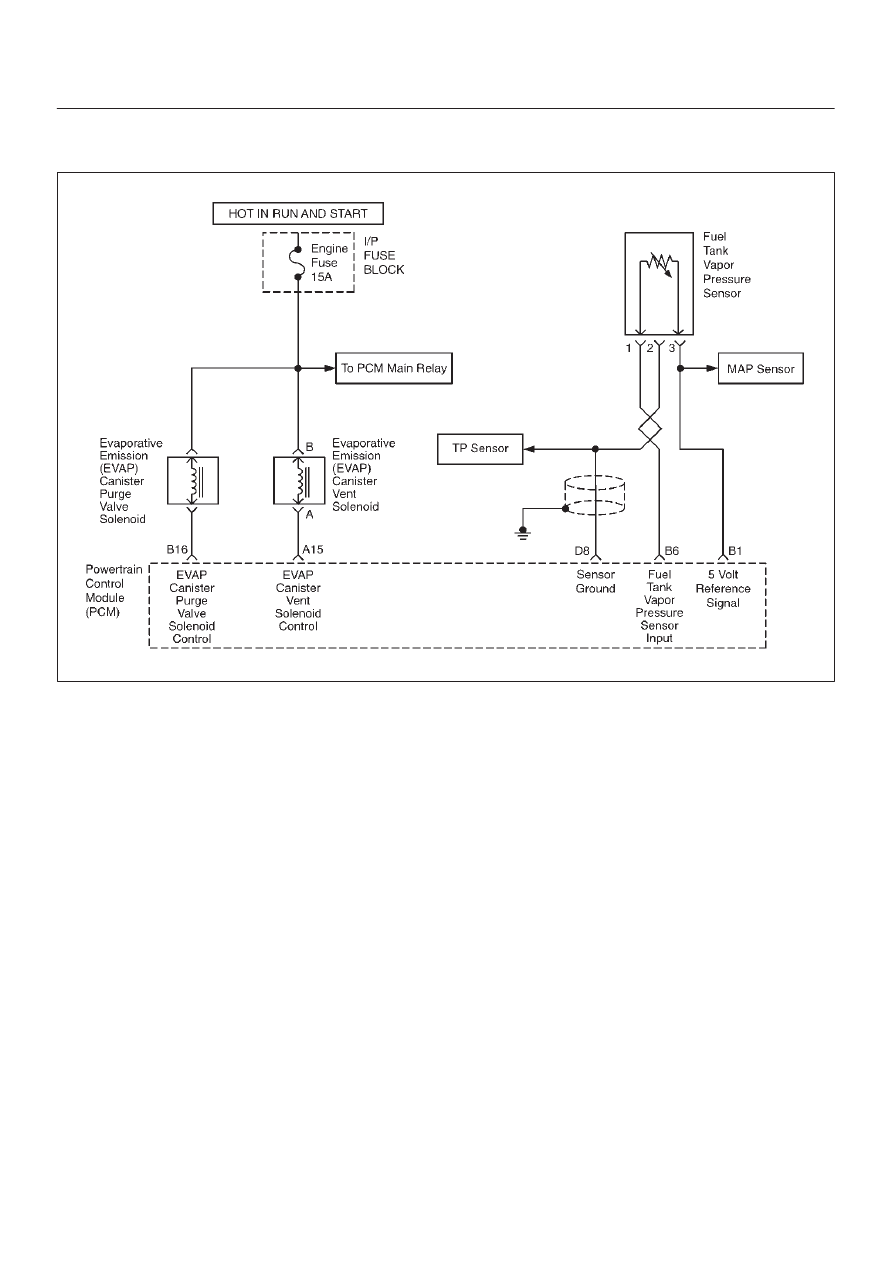Content .. 1298 1299 1300 1301 ..
Isuzu Amigo / Axiom / Trooper / Rodeo / VehiCross. Manual - part 1300

6E1–276
RODEO Y22SE 2.2L ENGINE DRIVEABILITY AND EMISSION
DIAGNOSTIC TROUBLE CODE (DTC) P0446 EVAPORATIVE EMISSION (EVAP)
CONTROL SYSTEM VENT CONTROL CIRCUIT MALFUNCTION
060R100040
Circuit Description
The evaporative system includes the following
components:
D
Fuel tank.
D
EVAP vent solenoid.
D
Fuel tank pressure sensor.
D
Fuel pipes and hoses.
D
Fuel vapor lines.
D
Fuel cap.
D
EVAP canister.
D
Purge lines.
D
EVAP canister purge valve.
D
EVAP service port.
The evaporative emission system is checked by applying
vacuum to the EVAP system and monitoring for a vacuum
decay. The PCM monitors the vacuum level through the
fuel tank pressure sensor signal.
At an appropriate time, the EVAP canister purge valve
and the EVAP vent solenoid are turned ON, allowing the
engine to draw a small vacuum on the entire evaporative
emission system. After the desired vacuum level has
been achieved, the EVAP canister purge valve is turned
OFF, sealing the system.
A restricted or blocked EVAP canister vent path is
detected by drawing a vacuum on the EVAP system,
turning OFF the EVAP vent solenoid and the EVAP
canister purge valve (EVAP vent solenoid Open, EVAP
purge PWM 0%) and monitoring the fuel tank vacuum
sensor input. With the EVAP vent solenoid open, any
vacuum in the system should decrease quickly unless the
vent path is blocked. A blockage can be caused by the
following conditions:
D
Faulty EVAP vent solenoid (stuck closed).
D
Plugged, kinked or pinched vent hose.
D
Shorted EVAP vent solenoid driver circuit.
D
Plugged evaporative canister.
If any of these conditions are present, Diagnostic Trouble
Code P0446 will set. DTC P0446 is a type B code.
Conditions for Setting the DTC
D
The BARO is greater than 72.3 kPa.
D
No: MAP, TPS, IAT, ECT, EGR, EVAP Purge Solenoid,
EVAP Vent Solenoid, VSS or System Voltage
Diagnostic Trouble Codes.
D
IAT and ECT at startup are between 4.2
°
C(40
°
F) and
35
°
C (95
°
F).
D
The difference between IAT and ECT at startup is less
than 6.75
°
C (12.2
°
F).
D
The Fuel Tank Level Sensor reads between 15% and
85%.
The above conditions are met, and the following condition
is met once while ignition cycle: